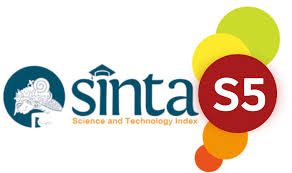THE EFFECTIVENESS OF IEPC (IMAGINE, ELABORATE, PREDICT, CONFIRM) STRATEGY TO IMPROVE THE TENTH GRADERS’ READING COMPREHENSION
DOI:
https://doi.org/10.36982/jge.v5i1.189Abstract
The objective of the study was to find out whether teaching reading comprehension through IEPC (Imagine, Elaborate, Predict, Confirm) Strategy had a significant effect on the student’s reading achievement or not. The population of the study was the Tenth Grade Students of State Islamic Senior High School 3 of Palembang in the academic year of 2015/2016. In doing the study, the researcher used quasi-experimental design to two groups of students. The total number of students was 369. The sample was 68 students that were taken by using purposive sampling strategy. Thirty four students were in the experimental group and thirty four students were in the control group. There are two instruments for collecting the data i.e. test and questionnaire. The result showed that teaching reading comprehension through IEPC strategy had a significant effect on the students’ reading achievement. The result of paired sample from experimental group was 10.877. Based on the independent sample t-test analysis, it was found that t-obtained was 11.17 (df=66; p=0.025), the critical value of the test was 1.668, it means there was significant difference between students’ comprehension in reading through IEPC strategy and those who were taught through lecturing.
 Keywords : Effectiveness, Improving, Reading Comprehension, IEPC (Imagine, Elaborate, Predict, Confirm) Strategy
References
Astarilla, Liya and Dede Warman. (2016). Using IEPC Strategy to Improve Students’ Reading Comprehension at Grade VIII. 4 of SMP Negeri 3 Pekanbaru. “Jurnal Universitas Islam Riauâ€
Gribbons, Barry and Joan Herman. (1997). True and Quasi-Experimental Designs. - Practical Assessment, Research and Evaluation. “Apeer-reviewed electronic journal†Volume 5, Number 14, November, 1997.
Wallen, Norman and J. E. Fraenkel. (1991). Educational Research: A Guide to Process. Ney york: McGraw-Hill High Education.
Paivio, A. (1971). Imagery and Verbal Processes. New York; Noh, Rinehart & Winston.
Wood, K. D. and Clare E. (2004). “Motivating Student Interest with IEPC Strategy.†Journal of Reading Teacher, Vol 58 No. 4.
Wood, K. D and Douville (1999). Imagine, Elaborate, Predict and Confirm (IEPC): Using Visual Imaginary to Enhance Comprehension. “Presentation for the National Reading Conference, Orlando, Florida.â€
Wood, Karen D and Janis M.Harmon. 2010. Strategies for Integrating Reading and Writing in Middle and High School. New York: Library of Congress Cataloging.
Downloads
Published
How to Cite
Issue
Section
License
Global Expert: Jurnal Bahasa dan Sastra is published by Universitas Indo Global Mandiri and licensed under a Creative Commons Attribution-ShareAlike 4.0 International License.











